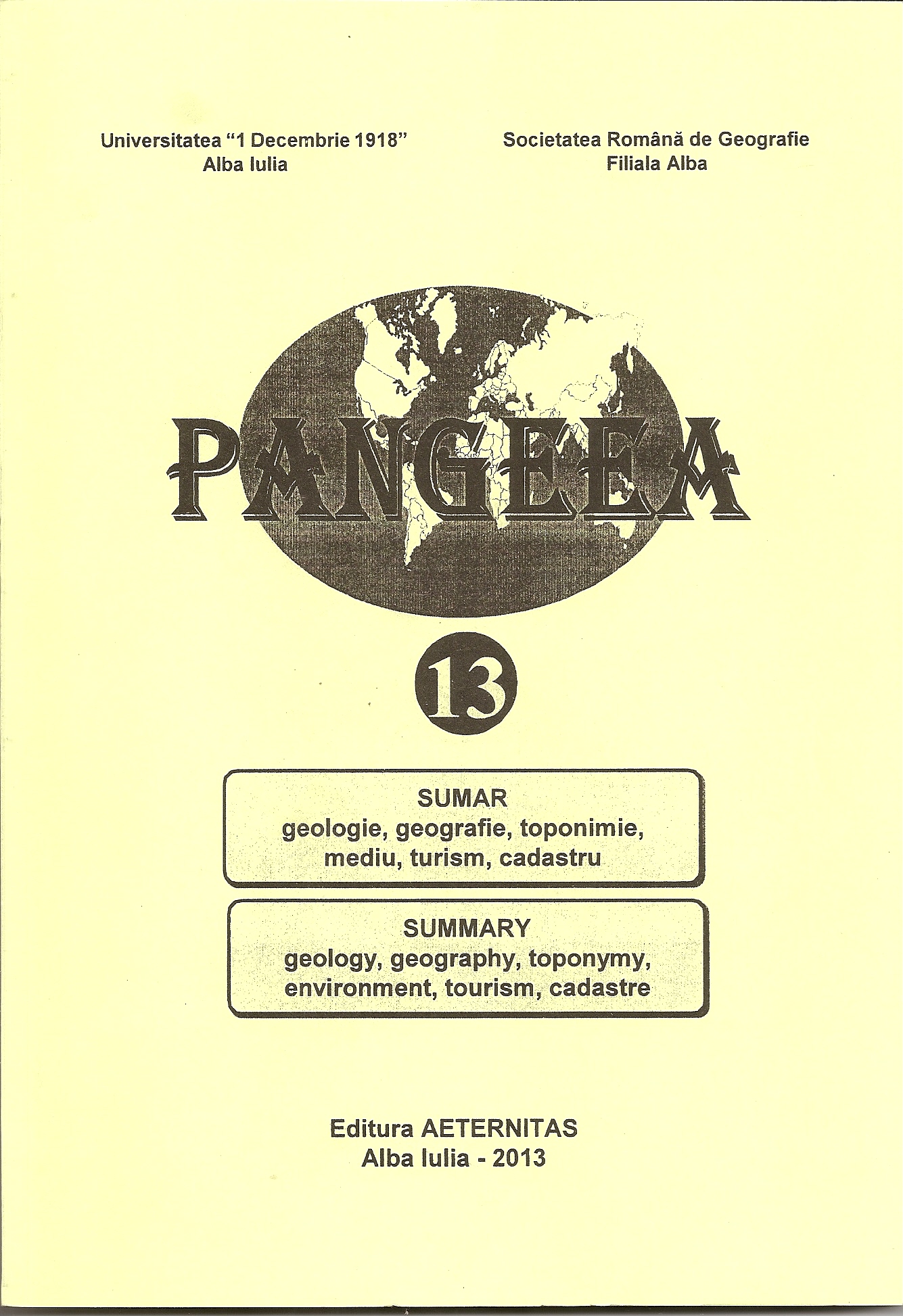ORIGINEA TOPONIMELOR COMUNEI FĂRĂU
(JUDEŢUL ALBA)
On the origin of toponyms in Fărău Commune (Alba County). P
Author(s): Mircea Buza, IULIANA MAIERSubject(s): Language and Literature Studies, Geography, Regional studies
Published by: Editura Aeternitas
Keywords: toponimy; geographical environment; historical and social events; TârnaveTableland;
Summary/Abstract: Placenamesin the five component villages of this commune (Fărău, Heria, Şilea, Sânbenedic andMedveş)reflect both the historical-geographical conditions and the ethnical structure of thepopulation formed of Romanians and Hungarians, who have been living here for centurieson end. Since the Romaniansrepresent the majority (over 80%), Hungarians being only 20%,most toponyms are of Romanian origin. However, the name of the five villages is ofHungarian origin, as is the case of many Transylvanian settlements in the possessions ofMagyar feudals. Field research has revealed a number of 345 place-names standing fornatural aspects and land use, the name of owners or neighbouring villages, the name of therespective village founder, or of a Roman-Catholic saint. The 300 names of Romanianextraction, originate from some Dacian, Latin, Slavic, Petchenego-Cuman orMagyarlexicalfunds, used in the languages of the populations the Romanians have been co-inhabiting within the course of its history of the last two thousand years. At the same time, the name oflandforms, waters and settlements, as well as most toponyms, reflect aspects of nature andland use. Next come the toponyms connected with the name of owners and of neighboringlocalities, only a few designating the name of the village head or village feudal, or of theRoman-Catolic saint perceived as protector of the respective settlement.
Journal: PANGEEA
- Issue Year: 13/2013
- Issue No: 13
- Page Range: 15-20
- Page Count: 6
- Language: Romanian

